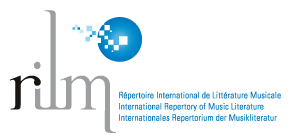La flauta japonesa shakuhachi: del uso ritual al musical
Palabras clave:
shakuhachi, ritual, secularización, occidentalizaciónResumen
Actualmente, la flauta de bisel japonesa shakuhachi (尺八) tiene presencia en todo el mundo, en muchos géneros musicales. Las particularidades de su sonido son producto de su empleo por siglos como implemento religioso, es decir, como un hōki (法器), asociado a prácticas budistas. Sin embargo, durante el periodo Meiji (1868-1912) de la historia de Japón, dicho uso se vio restringido de manera considerable, para convertirse en un instrumento para ser apreciado estéticamente, o sea, en un gakki (楽器), a pesar de lo cual conservó muchos de sus atributos previos. El objetivo de este trabajo es el de identificar los procesos a través de los cuales el shakuhachi pasó de ser un componente de la vida espiritual de un grupo de monjes a ser parte de prácticas musicales diversas y de sectores más amplios. Se verá que esto se debió a la intervención del gobierno, la participación de nuevos intérpretes y la exposición de los japoneses a la música extranjera. Se tomarán en cuenta los cambios en la construcción del instrumento, las características del repertorio, las técnicas de interpretación, la función social de los maestros y ejecutantes, y las formas de transmisión del conocimiento.
Descargas
Publicado
Número
Sección
Licencia
Derechos de autor 2020 Gerardo Tanamachi Castro

Esta obra está bajo una licencia internacional Creative Commons Atribución-NoComercial 4.0.
Atribución/Reconocimiento-NoComercial 4.0 Internacional
https://creativecommons.org/licenses/by-nc/4.0/
Usted es libre de:
- Compartir — copiar y redistribuir el material en cualquier medio o formato.
- Adaptar — remezclar, transformar y construir a partir del material.
- La licenciante no puede revocar estas libertades en tanto usted siga los términos de la licencia
Bajo los siguientes términos:
- Atribución — Usted debe dar crédito de manera adecuada, brindar un enlace a la licencia, e indicar si se han realizado cambios. Puede hacerlo en cualquier forma razonable, pero no de forma tal que sugiera que usted o su uso tienen el apoyo de la licenciante.
- No Comercial — Usted no puede hacer uso del material con propósitos comerciales.
- No hay restricciones adicionales — No puede aplicar términos legales ni medidas tecnológicas que restrinjan legalmente a otras a hacer cualquier uso permitido por la licencia.
Avisos:
No tiene que cumplir con la licencia para elementos del material en el dominio público o cuando su uso esté permitido por una excepción o limitación aplicable.
No se dan garantías. La licencia podría no darle todos los permisos que necesita para el uso que tenga previsto. Por ejemplo, otros derechos como publicidad, privacidad, o derechos morales pueden limitar la forma en que utilice el material.






